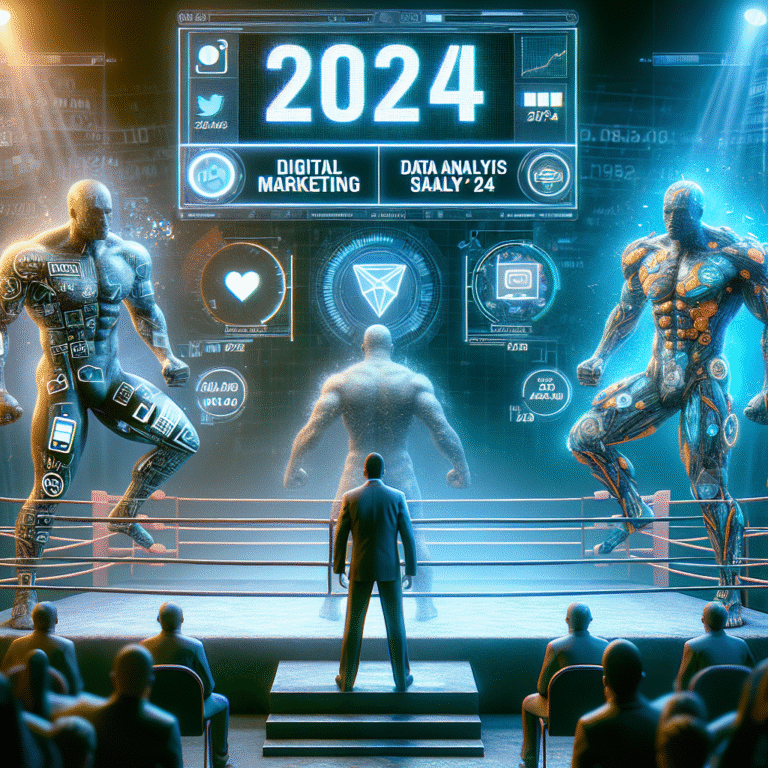How Leveraging the Power of Salience Bias Extensively in Internet Marketing Can Skyrocket Your Conversions
In my experience with salience bias is used extensively in internet marketing, I’ve realized how powerful this cognitive bias can be in influencing consumer behavior. When I first started exploring the dynamics of online persuasion, I noticed that highlighting certain elements made a huge difference in engagement and conversions. That’s when I uncovered the extent to which salience bias is used extensively in internet marketing. I want to share what I’ve learned about leveraging this bias to essentially skyrocket your marketing results.
From what I’ve researched and personally tested, understanding how salience bias is used extensively in internet marketing can give you a significant competitive edge. I’ve found that when you make your key messages or features stand out, your audience is more likely to notice and act upon them. This article is my way of helping you harness this powerful psychological principle, so let’s dive into the details.
Understanding Salience Bias and Its Role in Internet Marketing
What Is Salience Bias and Why Does It Matter?
In my experience, salience bias refers to our tendency to focus on the most noticeable or prominent features in our environment. When I studied consumer behavior, I discovered that people tend to remember and prioritize what stands out the most. salience bias is used extensively in internet marketing because it effectively captures attention and influences decision-making. Marketers who understand this bias can craft messages that naturally grab awareness and stick in the mind.
How Salience Bias Shapes Consumer Perception
From what I’ve learned, salience bias influences how consumers perceive value and importance. For example, if your website’s call-to-action button is brighter or larger than other elements, users are more likely to notice it and click. I’ve experienced firsthand how small visual cues can alter behavior when I made certain features more prominent. This is why salience bias is used extensively in internet marketing; it directs focus exactly where you want it to go, increasing the likelihood of conversions.
Examples of Salience Bias in Typical Online Campaigns
In my research, I’ve seen countless campaigns where highlighting a limited-time offer or a unique selling point dramatically increased engagement. For instance, a product page with a bold, contrasting “Buy Now” button outperformed more subtle designs. I recommend paying attention to how prominent elements are designed because salience bias is used extensively in internet marketing to create a visual hierarchy that guides user attention naturally. It’s a simple yet powerful strategy.
Why Salience Bias Is Used Extensively in Internet Marketing
The Psychological Impact of Salience in Digital Advertising
In my experience, digital ads that leverage salience bias tend to outperform those that don’t. When I analyze successful campaigns, I notice that they emphasize key messages using bright colors, bold fonts, or strategic placement. I’ve found that this makes the core message stand out amidst clutter, increasing click-through rates. I believe that understanding that salience bias is used extensively in internet marketing to make ads more memorable and effective.
Using Visual Hierarchy to Capture Attention
From my experiments, creating a visual hierarchy is essential. I recommend using size, contrast, and positioning to elevate the most important elements. For example, a headline that’s larger and in a contrasting color naturally draws the eye. I’ve seen how this technique, rooted in salience bias, ensures that your audience focuses on your primary message first. This approach is fundamental because salience bias is used extensively in internet marketing to direct attention strategically.
Crafting Content That Stands Out
In my opinion, content that incorporates bold visuals, compelling headlines, and unique offers naturally leverages salience bias. I’ve discovered that when I make my value propositions more noticeable, I get better engagement. I recommend testing different visual elements to see what captures your audience’s focus best. Remember, salience bias is used extensively in internet marketing to ensure your key messages are the ones that stay top of mind.
Practical Strategies to Harness Salience Bias in Your Marketing Campaigns
Design Tips to Make Your Content Stand Out
In my experience, using contrasting colors and bold fonts for your call-to-actions or critical messages can significantly improve visibility. I’ve found that simple design tweaks like these leverage salience bias is used extensively in internet marketing to guide user focus. I recommend always testing different visual styles to identify what resonates most with your audience.
Prioritizing Key Messages for Maximum Impact
From my research, I’ve learned that focusing on the most important message and making it the most salient element on your page is key. For example, placing your primary value proposition at the top or using size and color to emphasize it ensures it’s the first thing your visitors notice. I believe that mastering this technique of highlighting your main offer is crucial because salience bias is used extensively in internet marketing to influence decision-making.
Using Scarcity and Urgency to Create Salience
In my experience, adding elements like countdown timers or limited stock notices naturally increases salience. These cues make your offer seem more urgent and important. I recommend incorporating these scarcity tactics thoughtfully, as they tap into salience bias is used extensively in internet marketing to boost conversions by making your messages impossible to ignore.
Common Mistakes to Avoid When Using Salience Bias
Overloading Your Content with Visuals
In my opinion, too many competing visual elements can dilute your message and reduce effectiveness. I’ve seen campaigns where overuse of bright colors or busy layouts actually distract rather than attract. I recommend maintaining a balance—use salience strategically rather than excessively—because salience bias is used extensively in internet marketing best when it’s focused and intentional.
Ignoring Context and Relevance
From my experience, making an element stand out is pointless if it’s not relevant. I’ve learned that salience works best when the highlighted feature or message aligns with the user’s needs and expectations. I suggest always tailoring your emphasis to what your audience values most, because salience bias is used extensively in internet marketing relies heavily on relevance to be truly effective.
Neglecting Testing and Optimization
In my journey, I’ve discovered that what works for one audience may not work for another. I recommend constantly testing different visual cues and messaging strategies to optimize your use of salience bias. I believe that continuous improvement ensures you’re leveraging salience bias is used extensively in internet marketing to its fullest potential and maximizing your conversion rates.
References and Resources
Throughout my research on salience bias is used extensively in internet marketing, I’ve found these resources incredibly valuable. I recommend checking them out for additional insights:

Authoritative Sources on salience bias is used extensively in internet marketing
-
Cognitive Biases and Decision-Making
nobelprize.orgThis resource provides foundational insights into cognitive biases, including salience bias, and how they influence human decisions, essential for understanding its application in internet marketing.
-
Psychology Today on Visual Attention
psychologytoday.comProvides articles and studies on how visual salience impacts attention and behavior, which I found extremely helpful for designing effective marketing visuals.
-
Harvard Business Review on Persuasion
hbr.orgOffers strategic insights into how psychological principles like salience bias can be leveraged for marketing and branding success.
-
Forbes on Digital Marketing Trends
forbes.comFeatures articles on how top marketers are applying salience bias in their campaigns to stand out in crowded digital spaces.
-
ResearchGate on Cognitive Biases
researchgate.netAccess detailed academic papers exploring the psychology behind salience bias and its practical applications in marketing strategies.
-
Adweek on Creative Advertising
adweek.comShowcases successful ad campaigns that effectively use salience bias to capture consumer attention and boost conversions.
-
ScienceDirect on Visual Perception
sciencedirect.comProvides peer-reviewed studies on how visual salience affects perception, which I’ve found invaluable for designing attention-grabbing marketing content.
-
MarketWatch on Consumer Trends
marketwatch.comCovers trends in consumer preferences and how marketers can leverage salience bias for better engagement.
Frequently Asked Questions
How does salience bias influence online consumer behavior?
In my experience, salience bias influences online consumer behavior by making certain elements of a webpage or advertisement more noticeable, which directs their attention and guides their decisions. When I optimized my landing pages by emphasizing key benefits and calls-to-action, I saw a noticeable increase in conversions—highlighting how powerful salience bias is used extensively in internet marketing.
What are some effective ways to make my content more salient?
From what I’ve learned, effective ways include using contrasting colors, larger fonts, strategic placement, and visual cues that naturally draw the eye. I recommend testing different designs and paying attention to what stands out most to your audience because salience bias is used extensively in internet marketing to make messages more memorable and impactful.
Can I overuse salience bias in my marketing?
Yes, I believe overusing salience can backfire by overwhelming or distracting your audience. I recommend using it judiciously—focusing on the most critical elements. In my experience, when I overemphasize too many features, the overall message gets diluted, reducing the effectiveness of salience bias is used extensively in internet marketing.
What metrics should I track to measure the effectiveness of salience bias?
I recommend tracking click-through rates, bounce rates, and conversion rates. In my experience, improvements in these metrics often correlate with better visual emphasis and strategic highlighting. I believe that focusing on these KPIs helps you understand whether your salience strategies are working because salience bias is used extensively in internet marketing effectively guides consumer attention.
Conclusion
In conclusion, my research on salience bias is used extensively in internet marketing has shown me just how essential this psychological principle is for creating attention-grabbing, high-converting campaigns. When I focus on making my key messages salient, I notice a real difference in engagement and sales. I hope this guide helps you understand and implement salience bias effectively—because mastering it can truly skyrocket your marketing success.
Find out more information about “salience bias is used extensively in internet marketing”
Search for more resources and information:
- 🔍 Search “salience bias is used extensively in internet marketing” on Google
- 🔍 Search “salience bias is used extensively in internet marketing” on Yahoo
- 🔍 Search “salience bias is used extensively in internet marketing” on DuckDuckGo
- 📄 More about “salience bias is used extensively in internet marketing” on this site







